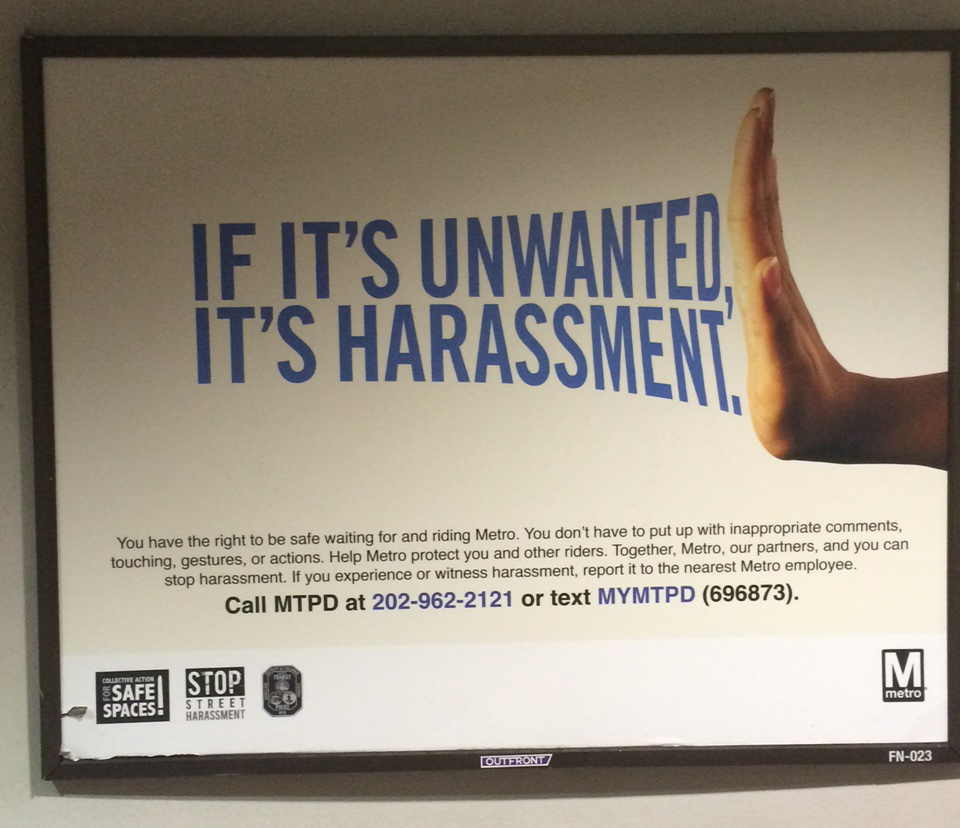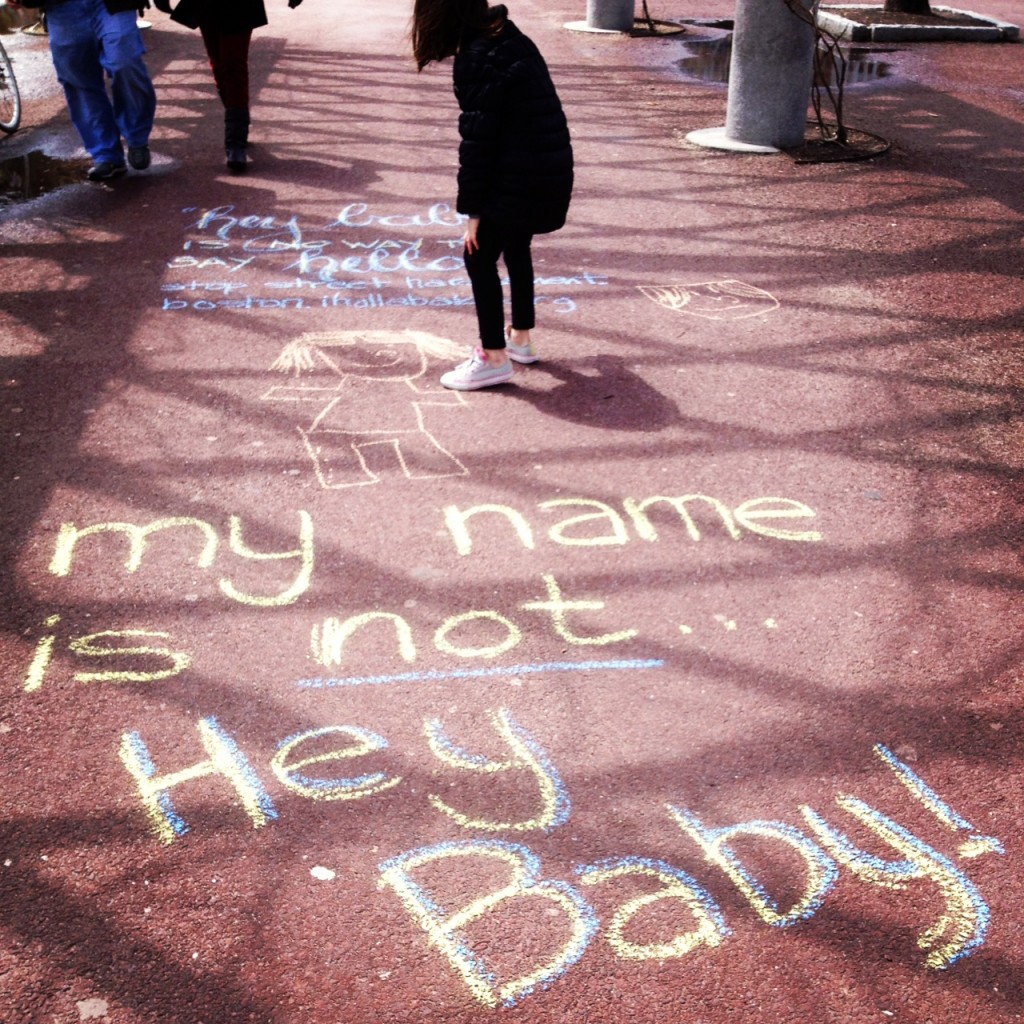Nearly three years after the first anti-harassment transit ads went up in the Washington, DC-area, I’m excited to announce that the second wave of ads are up! They are a collaboration between WMATA, Collective Action for Safe Spaces & SSH. #GoTeam
If you experience or witness harassment on the Metro, you can report by phone or text and online: www.wmata.org/harasssment. They are looking for patterns and hotspots, so please report if you have a moment (even incidents that happened in the past).
(Photo by Rebecca Henry)



